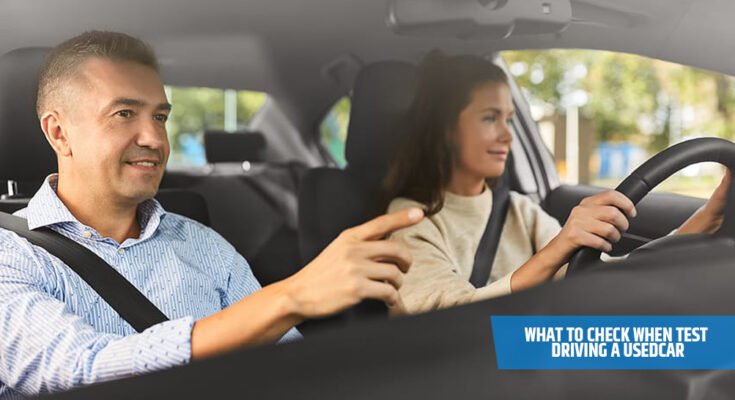Buying a used car can be a smart financial decision, but it’s essential to take the vehicle for a test drive before making a purchase. A test drive allows you to evaluate the car’s condition and determine if it’s a good fit for you.
The Importance of Test Driving a Used Car
Test driving a used car is critical because it lets you gauge the vehicle’s performance firsthand. This is your opportunity to spot any potential issues, such as unusual sounds, poor handling, or other concerns. By test driving, you can assess the overall condition of the car and decide if it meets your needs. This guide will walk you through what to look for when test driving a used car.
Before the Test Drive
Several steps can help ensure you make an informed and wise decision before getting behind the wheel. Consider the following:
- Research the Car: Learn about the make and model you’re interested in. Read reviews and ratings from other drivers to understand the car’s reliability, performance, and any common issues.
- Set a Budget: Decide on a budget before shopping. This will narrow down your choices and prevent you from overspending.
- Check the Car’s History: Request a vehicle history report to uncover any accidents or significant damage.
During the Test Drive
When taking a used car for a test drive, pay attention to the following factors to assess its condition:
Engine Performance:
- Start the car and listen to the engine. It should run smoothly without strange noises or vibrations.
-
- Test the acceleration by pressing the gas pedal and ensuring a smooth, responsive reaction.
- Check the car’s top speed to ensure it meets your expectations.
- Brakes and Steering:
- Press the brake pedal gently and firmly. The brakes should feel responsive, and the car should stop smoothly.
- Turn the steering wheel in both directions. It should be responsive and easy to control.
- Suspension and Ride Comfort:
- Drive over bumps or rough terrain to evaluate the suspension. The ride should be smooth, with no excessive bouncing or jolting. If the ride feels uncomfortable, the suspension may need attention.
- Transmission and Gear Shifting:
- If the car has a manual transmission, make sure the gears shift smoothly, and the clutch engages easily.
- For automatic transmissions, ensure that gear changes are smooth, timely, and free of jerking or slipping.
- Lights and Electrical Systems:
- Test all lights, including headlights, taillights, turn signals, and brake lights.
- Check the electrical systems like power windows, locks, air conditioning, and the infotainment system to ensure everything works.
- Comfort and Convenience:
- Adjust the seats and steering wheel to find a comfortable driving position.
- Test the air conditioning and heating system to ensure they function properly.
- Handling and Stability:
- Drive on local roads and highways to test the car’s handling and stability.
- Pay attention to how the car responds when turning, and check its stability at higher speeds.
- Parking and Maneuverability:
- Test the car’s ability to park and maneuver in tight spaces.
- Ensure good visibility from the driver’s seat and check how the car responds to parking moves.
Also read: How EVs Stand up for the Future of the Automobile Industry!
After the Test Drive
Once the test drive is complete, there are a few more factors to consider when evaluating the car.
- Check the Car’s History: Before finalizing your purchase, double-check the vehicle’s history report. Look for any prior accidents, repairs, or red flags that may affect the car’s value or safety.
- Inspect the Exterior:
- Walk around the car and check for scratches, dents, rust, or other damage.
- Make sure the doors and trunk open and close smoothly, and check that the tires are in good condition.
- Inspect the Interior:
- Examine the interior for wear and tear. Test the controls to ensure they’re all functioning properly.
- Look for signs of water damage or mold in the upholstery and carpeting.
- Check Under the Hood:
- Open the hood to inspect the engine. Look for any leaks or signs of damage.
- Ensure that fluids are at appropriate levels and that there’s no visible corrosion or rust.
- Check the condition of the battery and alternator.
- Get a Professional Inspection: If you’re unsure about the car’s condition, consider having a mechanic conduct a professional inspection. They can identify potential issues that might not be immediately visible.
Conclusion
A test drive is a vital part of the used car buying process. It allows you to assess the car’s performance, comfort, and condition before committing to a purchase. By following these tips and carefully evaluating the car’s key features, you can make a more informed decision.
Take your time, ask questions, and don’t hesitate to walk away if you’re not fully satisfied with the car’s condition or performance.






